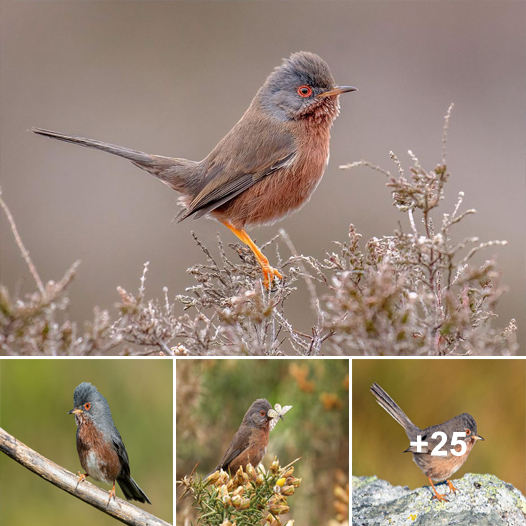The Dartford Warbler, a small and visually striking bird, graces the landscapes of southern Europe and North Africa.

With its reddish-brown plumage and elongated tail, the Dartford Warbler stands out in its surroundings, leaving an indelible impression on observers.

This avian beauty predominantly inhabits heathlands and scrub habitats, where it finds an abundance of insects to sustain itself.

It favors low-lying areas with a warm Mediterranean climate, thriving in regions ranging from sea level up to approximately 800 meters in altitude. Its range includes the Iberian Peninsula, southern France, Italy, and North Africa.

The Dartford Warbler is a solitary creature, typically seen alone or in pairs. It relies on its agility and keen eyesight to catch insects, hopping around on the ground or within low shrubs.

The bird’s melodic song is equally noteworthy, characterized by a series of high-pitched, warbling notes that reverberate through its habitat.

Currently, the International Union for Conservation of Nature (IUCN) classifies the Dartford Warbler as a species of “Least Concern,” indicating that it is not presently facing the risk of extinction.
However, certain areas have witnessed declines in the bird’s range and population due to habitat loss and fragmentation. To safeguard the species, ongoing conservation efforts are underway, aiming to protect its habitat and prevent further population declines.

The Dartford Warbler stands as a testament to the intricate beauty and delicate balance of nature. While it currently enjoys a relatively secure status, the preservation of its habitat and the prevention of population declines are paramount.

By prioritizing conservation initiatives, we can ensure the continued presence of this small but remarkable bird in the heathlands and scrublands of southern Europe and North Africa.
Please LIKE and SHARE to your friends and family!
